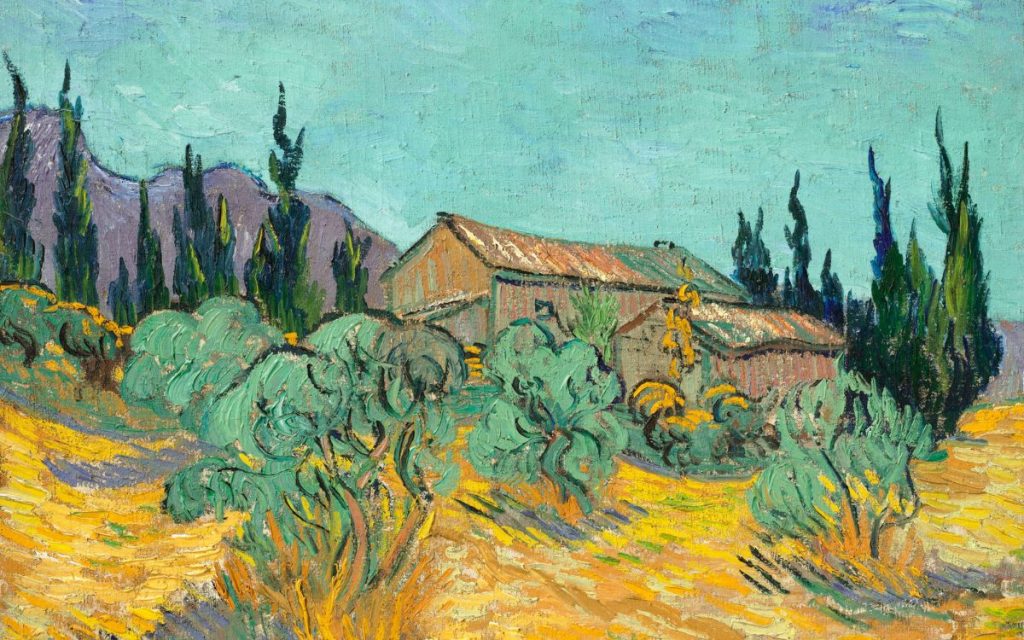Vincent van Gogh, without a doubt, is one of the most globally beloved and masterful painters of all time. His immaculate usage of bold colors and expressive brushstrokes made him a pioneer of the Post-Impressionist movement. However, not many people know about van Gogh’s love for the Mediterranean landscape.
In 1888, van Gogh left Paris and moved to the small town of Arles in the south of France. It was here that he became enamored with the Mediterranean landscape. The warm, sunny climate and the brilliant colors of the sea and sky gave him a new source of inspiration. Without any delay, let’s dive deep into Van Gogh’s love of the Mediterranean landscape.
What Attracted Van Gogh to the Mediterranean Landscape?
For Vincent van Gogh, the painting expressed his emotions and connected with the world surrounding him. And he saw nature as a way to escape from everyday life’s stresses and find solace and serenity in the world’s beauty. The Mediterranean landscape offered him a new subject to explore and experiment with.
Additionally, while in the south of France, van Gogh sought relief from his mental health struggles. The region’s warm climate and tranquil ambiance created a therapeutic environment for him to focus on his painting and find some measure of calm.
Van Gogh’s time in the south of France was a period of intense creativity and experimentation. He could break free from traditional painting techniques and experiment with new colors and brushstrokes. His use of bright, bold colors and thick brushstrokes in his Mediterranean landscape paintings created a sense of energy and movement that was revolutionary at the time.
Let’s look at a couple of van Gogh’s famous paintings of the Mediterranean landscape that viewers cannot get enough of.
Starry Night Over the Rhone
Artist Van Gogh’s masterpieces of the Mediterranean landscape are some of his most stunning and exquisite works. He was more specifically magnetized to the rocky cliffs and bright blue waters. Also, he uses vivid colors and bold brushstrokes in most of his masterpieces.
‘Starry Night Over the Rhone’ is one of the most famous landscape artworks that brilliantly showcases the swirling stars over the Rhone River in Arles. The intelligent use of vibrant blues, yellows, and stars’ reflections on the water combine to give the illusion that the masterpiece is almost glowing.
Van Gogh painted “Starry Night Over the Rhone” during a prolific period. In fact, he had just moved to Arles in the south of France and was inspired by the beautiful landscapes and vibrant colors of the Mediterranean. Despite its beauty, “Starry Night Over the Rhone” was not an instantaneous success. You’d be surprised that it started gaining recognition years after van Gogh’s demise. Today, it is considered one of his most iconic works and is displayed in the Musée d’Orsay in Paris.
The Olive Trees
Another noteworthy artwork is the famous ‘The Olive Trees’, which is a painting showing a row of olive trees in the hills near Saint-Rémy-de-Provence. Painted in the hue of green and blue with a vibrant yellow-orange sky, the artwork has a mesmerizing effect on the viewers while creating a sense of profound perspective and visual harmony.
One can also not help but admire the thick brushstrokes that give the stunning effect as if the trees are rhythmically swaying in the breeze. This technique is known as impasto, and it involves applying thick layers of paint to create texture and depth. Plus, it provides an extraordinary appearance of the artwork is almost three-dimensional.
“The Olive Trees” is crucial when discussing van Gogh’s love of the Mediterranean landscape because it mirrors his immense love of nature and his deep connection to the landscape. For van Gogh, the olive trees were a symbol of perseverance and resilience, as they were able to thrive in the harsh conditions of the south of France.
Conclusion
Van Gogh’s paintings of the Mediterranean landscape are a beautiful testament to his love of the region and his innate and extraordinary talent as an artist. They are also a perpetual reminder of how beautiful the world is and how much perspective the world can offer to us when observed. beauty and wonder of the natural world.
Nonetheless, van Gogh’s paintings of the Mediterranean landscape are an imperative aspect of his legacy. Van Gogh’s connection to the Mediterranean is a reminder that art can transcend borders and cultures and that the natural world is a source of endless inspiration.
Michael C Vang is a passionate blogger. He has been blogging since 2013 on a variety of topics. He is committed to creating informative and engaging content that helps readers learn more about everything.



